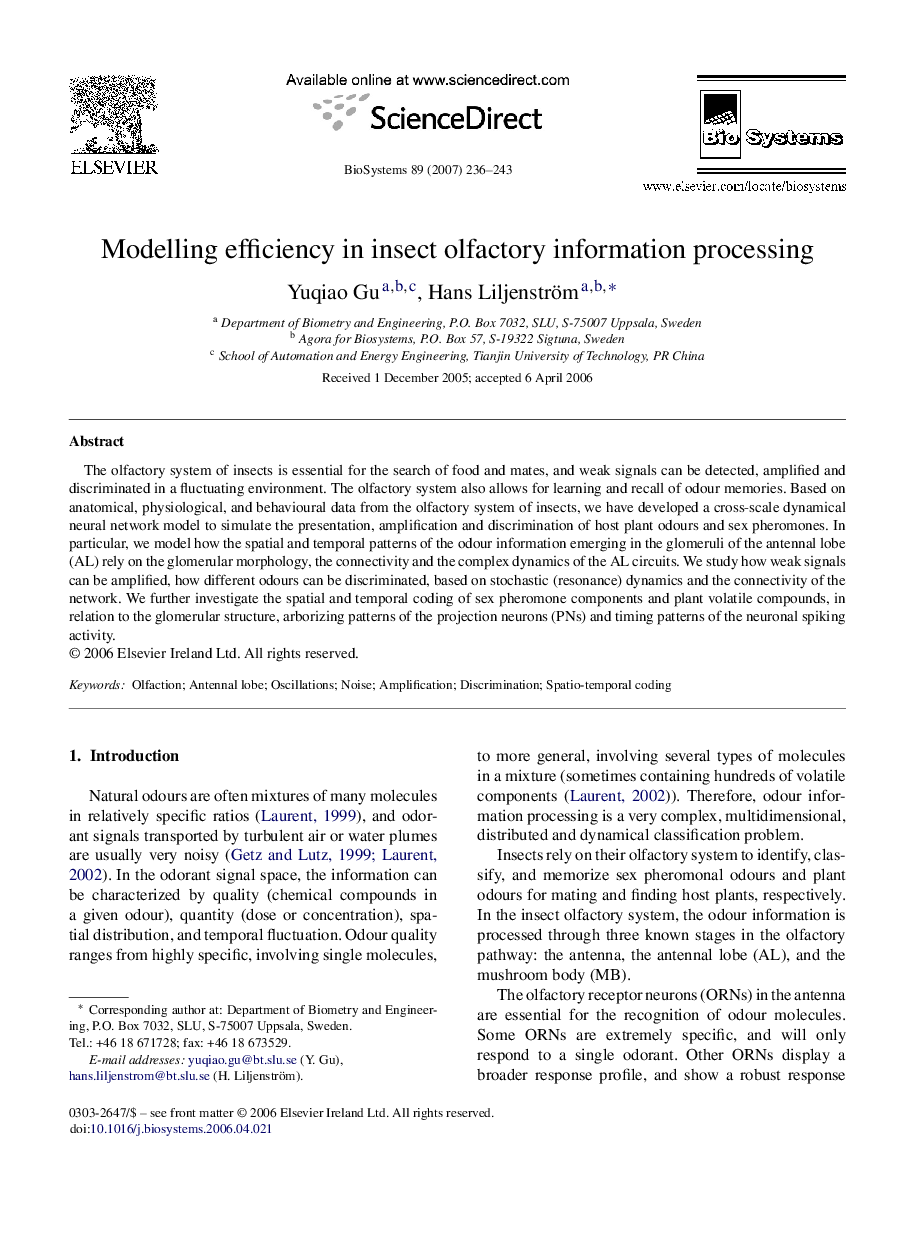| Article ID | Journal | Published Year | Pages | File Type |
|---|---|---|---|---|
| 2077162 | Biosystems | 2007 | 8 Pages |
The olfactory system of insects is essential for the search of food and mates, and weak signals can be detected, amplified and discriminated in a fluctuating environment. The olfactory system also allows for learning and recall of odour memories. Based on anatomical, physiological, and behavioural data from the olfactory system of insects, we have developed a cross-scale dynamical neural network model to simulate the presentation, amplification and discrimination of host plant odours and sex pheromones. In particular, we model how the spatial and temporal patterns of the odour information emerging in the glomeruli of the antennal lobe (AL) rely on the glomerular morphology, the connectivity and the complex dynamics of the AL circuits. We study how weak signals can be amplified, how different odours can be discriminated, based on stochastic (resonance) dynamics and the connectivity of the network. We further investigate the spatial and temporal coding of sex pheromone components and plant volatile compounds, in relation to the glomerular structure, arborizing patterns of the projection neurons (PNs) and timing patterns of the neuronal spiking activity.
